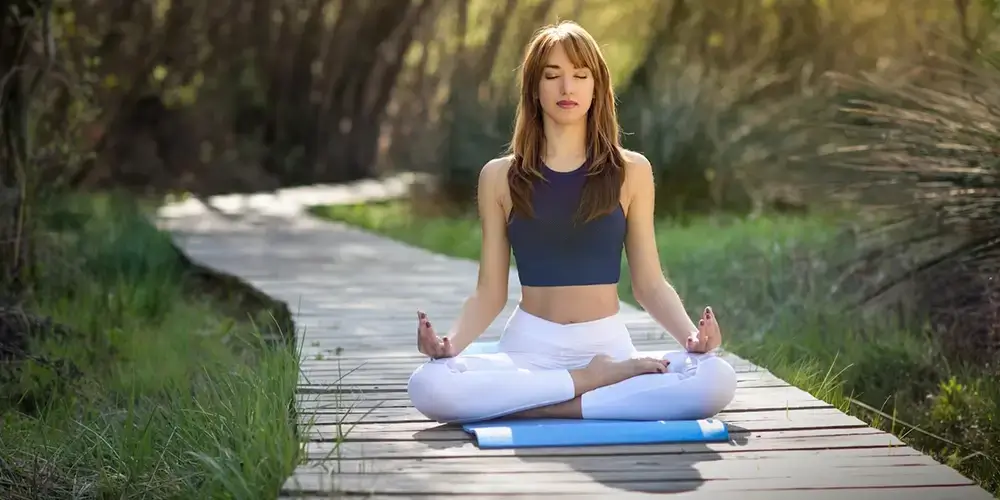

Meditation Techniques: How to Get Started
02/05/2024 Nancy Wilson 717
Meditation is a transformative practice that can bring peace, clarity, and a sense of balance into your life. Whether you’re looking to reduce stress, improve concentration, or simply find a moment of calm in your busy day, meditation offers a wealth of benefits. Getting started with meditation involves a few key steps: choosing a meditation space and time, understanding posture and breathing techniques, and learning to deal with distractions while developing a consistent practice. Let’s delve into each of these elements to help you embark on your meditation journey.
Choosing a Meditation Space and Time
Selecting a Space
Creating a dedicated meditation space is essential to cultivating a regular practice. This space should be a place where you feel comfortable and can relax without interruptions. Here are some tips for choosing your meditation space:
-
Quiet and Private: Find a quiet spot in your home where you won’t be disturbed. This could be a corner of a room, a small nook, or even a section of your garden.
-
Clean and Clutter-Free: A tidy space can help clear your mind. Remove any unnecessary items to create a serene environment.
-
Comfortable and Inspiring: Add elements that make the space inviting. A comfortable cushion or chair, a soft blanket, and a few inspiring objects like candles, crystals, or plants can enhance the atmosphere.
Determining the Best Time
Consistency is key in meditation, so choosing a time that fits seamlessly into your daily routine will help you stick with it. Consider the following:
-
Morning Meditation: Starting your day with meditation can set a positive tone. It helps clear your mind and prepare you for the day ahead.
-
Evening Meditation: Meditating in the evening can help you unwind from the stresses of the day and promote better sleep.
-
Flexibility: While having a set time is beneficial, it’s also important to be flexible. If your schedule changes, find another suitable time that day to meditate.
Posture and Breathing Techniques
Finding the Right Posture
The posture you adopt during meditation plays a significant role in your comfort and concentration. Here are some common postures to consider:
-
Sitting on a Cushion: Sit cross-legged on a cushion with your hips elevated above your knees. This helps maintain a straight spine and open chest.
-
Chair Sitting: If sitting on the floor is uncomfortable, sit on a chair with your feet flat on the ground, back straight, and hands resting on your lap.
-
Lying Down: While lying down can be relaxing, it also increases the risk of falling asleep. If you choose this position, keep your arms at your sides and legs slightly apart.
Breathing Techniques
Breathing is a fundamental aspect of meditation, anchoring your mind and bringing awareness to the present moment. Here are some breathing techniques to practice:
-
Natural Breathing: Simply observe your breath without trying to change it. Notice the sensation of air entering and leaving your nostrils or the rise and fall of your chest.
-
Deep Breathing: Inhale deeply through your nose, allowing your abdomen to expand, then exhale slowly through your mouth. This can help calm your nervous system.
-
Counting Breaths: Count each breath to help maintain focus. For example, count "one" as you inhale, "two" as you exhale, up to ten, then start over.
Dealing with Distractions and Developing a Consistent Practice
Managing Distractions
Distractions are a natural part of meditation, especially for beginners. Here are strategies to manage them:
-
Acknowledge and Let Go: When a distraction arises, acknowledge it without judgment and gently bring your focus back to your breath or chosen point of focus.
-
Use a Mantra: Repeating a word or phrase, such as "peace" or "calm," can help anchor your mind and reduce distractions.
-
Mindfulness Practice: Incorporate mindfulness into your daily activities. Being present during mundane tasks can enhance your overall ability to concentrate during meditation.
Building a Consistent Practice
Developing a consistent meditation practice requires patience and persistence. Here are some tips to help you stay committed:
-
Start Small: Begin with just 5-10 minutes of meditation each day and gradually increase the duration as you become more comfortable.
-
Set Realistic Goals: Don’t pressure yourself to achieve perfection. The goal is to practice regularly, not to have a perfect session every time.
-
Create a Routine: Incorporate meditation into your daily routine, linking it to an existing habit like brushing your teeth or drinking your morning coffee.
-
Track Your Progress: Keep a journal of your meditation sessions. Note how you felt before and after, any challenges you faced, and any insights gained. This can be motivating and help you see your progress over time.
-
Find a Community: Join a meditation group or attend guided sessions. Sharing the experience with others can provide support and encouragement.
Embarking on a meditation journey is a profound step towards enhancing your well-being. By choosing a dedicated space and time, practicing proper posture and breathing techniques, and learning to manage distractions, you can develop a consistent and rewarding meditation practice. Remember, meditation is a personal journey, and there is no right or wrong way to do it. Be patient with yourself, and enjoy the process of discovering the peace and clarity that meditation can bring into your life.
Recent Blogs
Building a Diversified Inves ...
26/01/2025 1675
Integrating AI and Machine L ...
24/01/2025 1211
Health Insurance Regulations ...
22/01/2025 2304
Recognizing Signs of Mental ...
20/01/2025 2306
Understanding Employers' Leg ...
18/01/2025 1294
Trending Blogs
Interest Rates: How They Aff ...
20/06/2024 12582
Client Retention: Building S ...
20/06/2024 10653
Introduction to Common Law: ...
21/06/2024 9697
Common Types of Criminal Charges
02/03/2024 8896
Corporate Finance Law: Raisi ...
04/06/2024 8584











